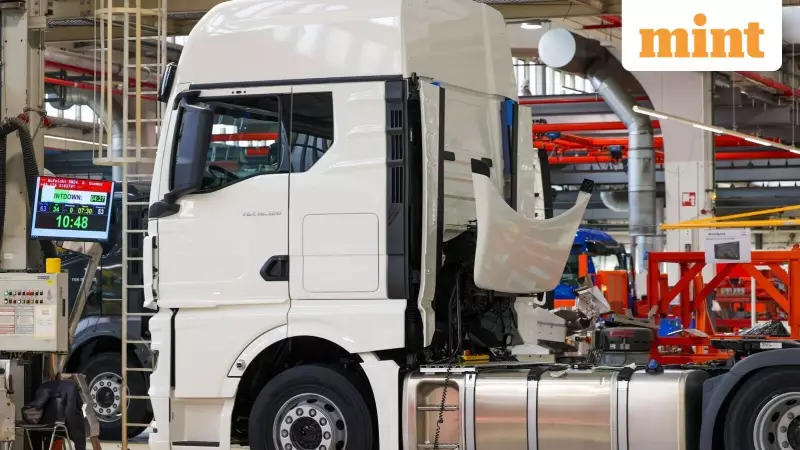
India's Electric Truck Revolution Gains Momentum
India's ambitious plan to electrify its heavy freight transportation sector is finally showing significant progress as three major automotive players approach critical milestones under the government's flagship incentive program. The Murugappa Group's electric vehicle arm IPLTech Electric Pvt Ltd is nearing crucial localization and homologation approvals, while industry giants Tata Motors Ltd and Volvo Eicher Commercial Vehicles (VECV) prepare to commence testing of their electric trucks.
PM E-Drive Scheme Extended Amid Implementation Challenges
The development comes as the government has granted a two-year extension until March 2028 for the e-bus and e-truck segments under the PM E-Drive scheme, which was originally scheduled to lapse in March 2026. This extension follows concerning implementation patterns, including zero disbursals for electric and hybrid ambulances and limited uptake in the commercial vehicle segments.
The ₹10,900 crore scheme has specifically allocated ₹500 crore toward incentives for purchasers of more than 5,600 medium and heavy-duty e-trucks by FY28. These vehicles, classified as N2 and N3 category trucks with gross vehicle weight exceeding 3.5 tonnes, represent a critical focus area despite comprising only about 3% of India's vehicle population while contributing approximately one-third of vehicular carbon emissions.
Rare Earth Magnet Exemption Breaks Implementation Deadlock
A significant breakthrough came in September 2025 when the government provided temporary relaxation from localization requirements for e-trucks and e-buses, specifically allowing manufacturers to import and use motors containing rare earth magnets without losing incentive eligibility. This crucial policy adjustment addressed a fundamental supply chain constraint that had hampered electric commercial vehicle production.
"Electric two-wheeler and three-wheeler manufacturers found alternatives. Some found light rare earth magnets, and some started using rare earth-free motors in their vehicles. But there was no such solution found for e-buses and e-trucks, and hence the temporary exemption," explained an anonymous source familiar with the development.
A Volvo Eicher spokesperson welcomed the government's proactive approach, stating: "VECV has been working with partners, suppliers and relevant authorities to strengthen domestic sourcing for EV components. We look forward to continuing this collaboration, thereby contributing to the development of sustainable and 'atmanirbhar' solutions."
Market Adoption Shows Promising Growth Trajectory
Recent data from the government's Vahan vehicle registry indicates encouraging market signals, with 309 electric goods carriers in the N2 and N3 categories sold so far in 2025. This represents substantial growth compared to 166 units sold throughout 2024 and 320 units in 2023, though the numbers remain modest in the context of India's massive freight transportation sector.
These electric trucks are primarily being deployed in essential infrastructure sectors including:
- Logistics and supply chain operations
- Steel manufacturing and transportation
- Port operations and container movement
- Cement industry logistics
Infrastructure and Cost Challenges Remain
Despite the progress, significant hurdles persist in India's electric truck adoption journey. An October report jointly prepared by government think tank NITI Aayog and global organization Smart Freight Centre highlighted inadequate charging infrastructure at major truck hotspots as a universal concern across regions.
The substantial upfront cost differential presents another major barrier. While the PM E-Drive scheme provides subsidies ranging from ₹2-9 lakh per e-truck, the technology remains significantly more expensive than conventional alternatives. Heavy electric trucks can cost between ₹1.0-1.5 crore, compared to ₹25-50 lakh for their diesel counterparts.
Professor Gurudas Nulkar of Gokhale Institute of Politics and Economics cautioned about operational challenges: "Considering India's topography, e-trucks for inter-city long distance transport will pose considerable challenges. Large battery sizes and long charging times could make adoption slow, and infrastructure unviable." He suggested that initial adoption might be more feasible for intra-city applications such as garbage collection.
As India's automotive manufacturers navigate these challenges while capitalizing on government support, the coming months are expected to be crucial for determining the scalability and long-term viability of electric freight transportation in the country.





